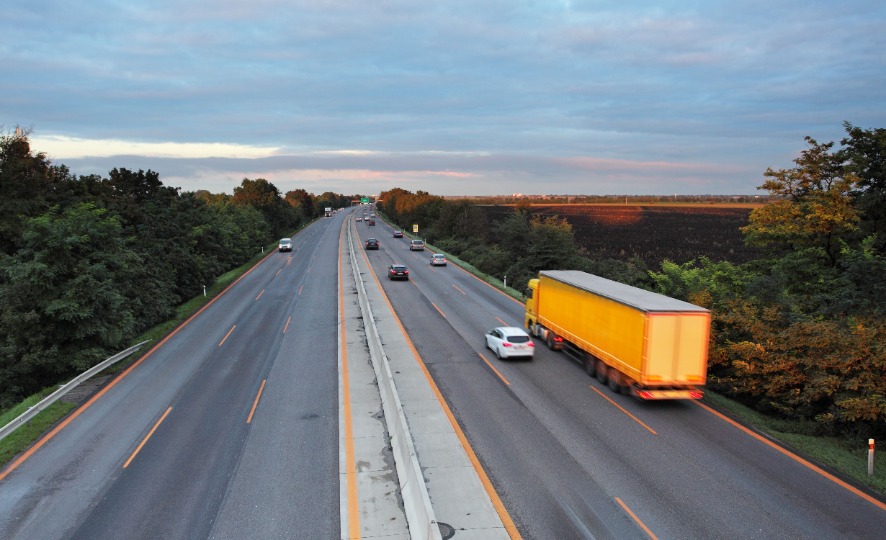Tips for Sharing Florida Roads with Public Transit & Commercial Vehicles
December 22, 2022 | Category: Personal Injury, Truck Accidents | ShareDo you know the Florida rules of the road for driving with public transit buses and commercial vehicles? Many drivers have been driving for years and took driver’s ed classes a long time ago. There are also many new drivers on our roads, including drivers visiting from other states and countries who may benefit from a review of how to drive safely when public transit buses and commercial vehicles are sharing Florida roads.
"In order to help prevent accidents when public transit and commercial vehicles are present, we at Spivey Law Firm, Personal Injury Attorneys, P.A. would like to share some tips from the Florida Highway Safety and Motor Vehicles Department (FLHSMV),” said Fort Myers Accident Attorney Randall Spivey.
Public Transit Buses
Drivers are required to yield the right-of-way to public transit buses that are traveling in the same direction and have signaled they are reentering the traffic flow from a specifically designated pullout bay.
Commercial Motor Vehicles (CMVs)
 Florida has different rules and safety strategies for motorists who are sharing the road with CMVs such as semi-trucks or travel buses, including:
Florida has different rules and safety strategies for motorists who are sharing the road with CMVs such as semi-trucks or travel buses, including:
Blind Spots
- “Stay out of the ‘No Zone.’ CMVs have large blind spots in front, behind, and on both sides of the vehicle. Even though large vehicles have several rear-view mirrors, other vehicles will be hidden from view if within the ‘No Zone’/blind spot.
- Don’t tailgate; you’ll be in the rear blind spot and may collide with the CMV if it stops unexpectedly.
- If you are stopped behind a CMV on an upgrade, leave space in case the CMV drifts back when it starts to move. Also, keep to the left in your lane so the driver can see that you’re stopped behind the CMV.
- Don’t use high beam headlights when following a CMV at night. Bright lights will blind the driver when they reflect off the CMV’s large side mirrors.
- When a CMV is coming from the opposite direction, keep to the right to avoid a sideswipe crash.
- CMVs often need to swing wide to the left in order to make a right turn. Do not drive between the CMV and the curb – they will not be able to see you.
- Never cross behind a CMV that is preparing to back up or is in the process of doing so. The size of most CMVs and trailers completely hide objects behind them from view.
Passing CMVs
- When passing a CMV, first check to your front and rear, and move into the passing lane only if it is clear and safe to pass. You must signal that you are changing lanes and let the CMV driver know you are passing by blinking your headlights, especially at night.
- Pass CMVs on the left side for maximum visibility. Complete your pass as quickly as possible so that you do not remain in the CMVs blind spot.
- Avoid cutting in too soon when passing a CMV. Large CMVs can’t stop as quickly as other vehicles. Be sure you can see the cab in your rear-view mirror before completing your pass. (CMV drivers may flash headlights to let you know it is OK to merge back into the lane.)
- Avoid passing a CMV on a downgrade; the CMV’s weight and momentum will cause it to increase speed.
- When a CMV passes you, keep to the right side of your lane. Do not speed up while the CMV is passing.”
Should you or a loved one be injured in a vehicle accident, please contact Spivey Law Firm, Personal Injury Attorneys, P.A. after seeking medical attention. The firm is available 24/7 at 239.337.7483, toll-free at 1.888.477.4839 or online at SpiveyLaw.com. There are no costs or attorney fees until we receive a monetary recovery for you.
Here is what one of our clients said about working with our personal injury team:
- Everyone is amazing! The staff is attentive and helpful. Mary is phenomenal!! Mr. Spivey was honest and kept his word at every turn! Could not have been more pleased with the great help Spivey Law Firm provided. Honest, Kind, and Professional. CONNY

